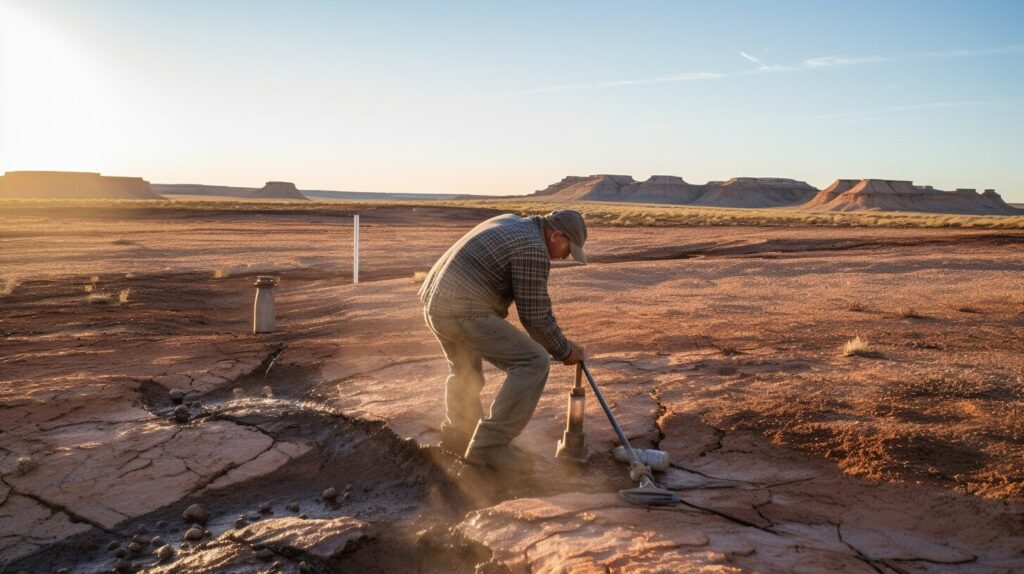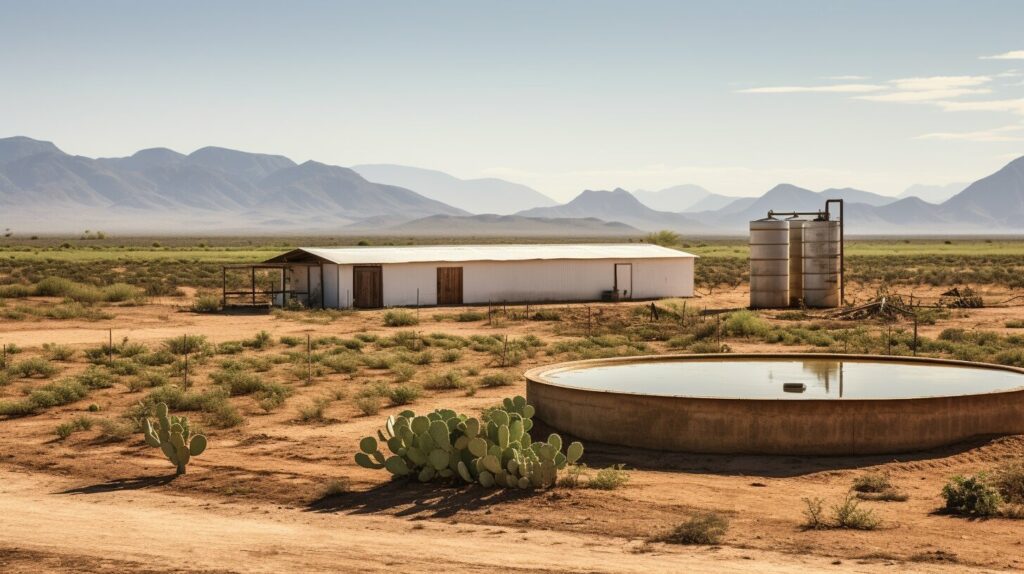

Limited water sources present a significant challenge in arid outdoor environments, impacting agriculture, ecosystems, and human well-being. The effects of prolonged drought and limited rainfall are felt acutely in these regions, creating a critical need for water conservation strategies to ensure the well-being of both people and the environment. In this article, we’ll delve into the frustration of limited water sources, exploring the multifaceted problems and innovative solutions to this urgent issue. We’ll analyze the various factors contributing to water scarcity, examine existing solutions, and investigate potential future strategies to guarantee water security for all in arid regions. This article will cover issues from understanding water conservation and efficiency, to reviewing modern technologies and management systems.
The Impact of Limited Water Sources in Arid Environments
Understanding the Problem:
Water scarcity significantly impacts various aspects of life in arid and semi-arid regions. Limited water sources severely restrict agricultural productivity, leading to food insecurity and impacting local economies and communities. Ecosystems suffer due to reduced water availability, leading to biodiversity loss and desertification. Furthermore, limited water sources have a direct effect on human health and well-being, as access to clean water is paramount. A lack of sufficient water can also exacerbate social inequalities, creating tensions and conflicts over increasingly scarce resources. Water stress can be observed in many different environments, from small-scale agricultural communities to global water resources.
Water Conservation Techniques in Arid Climates
Implementing Efficient Irrigation:
One crucial element of water conservation in arid environments is implementing efficient irrigation techniques. Drip irrigation and micro-sprinklers are prime examples of technology that focuses on delivering water directly to the roots of plants, reducing evaporation and minimizing water loss. These techniques greatly enhance water use efficiency compared to traditional irrigation methods. Studies have shown that proper irrigation can reduce water consumption by up to 50% in some cases, illustrating the significant impact of these technologies. Such systems can be coupled with advanced sensors that monitor soil moisture levels and automatically adjust water delivery based on real-time needs.
Innovative Water Management Systems
Desalination Technologies for Coastal Regions:
In coastal areas of arid regions, desalination technologies, specifically reverse osmosis, offer a vital solution for providing access to potable water. Desalination plants can extract fresh water from seawater, supplementing limited freshwater resources. The energy requirements for desalination vary, but advancements in technology are continuously improving the energy efficiency of these systems. Additionally, the integration of desalination plants with local water distribution networks can ensure consistent access to water, especially in remote areas.
The Role of Rainwater Harvesting
Collecting and Storing Precious Rainfall:
Rainwater harvesting is a highly effective water conservation technique in arid regions. By collecting and storing rainwater, communities can significantly increase their water supply during dry periods, especially in areas with high rainfall variability. This approach is crucial in mitigating the effects of droughts and ensuring a more sustainable water supply. Rainwater harvesting systems can vary from small-scale household solutions to larger-scale community projects, demonstrating their versatility in addressing different needs and challenges.
Promoting Community Awareness and Education
Fostering a Culture of Water Conservation
Community education plays a vital role in water conservation efforts in arid environments. Educating communities about the importance of responsible water use and promoting water-wise practices is crucial for long-term sustainability. Water-conscious communities often implement and maintain sustainable water-efficient practices. For example, educating communities about the benefits of drought-tolerant plants can dramatically change water consumption patterns. Local authorities can play a significant role in disseminating information, organizing workshops, and providing incentives for adopting water-saving practices.
Case Studies and Statistical Data
Success Stories in Water Conservation
Numerous successful case studies highlight the effectiveness of water conservation strategies in arid regions. For instance, a project in the Middle East demonstrated a significant reduction in agricultural water usage following the introduction of drip irrigation, leading to substantial cost savings and increased crop yields. Furthermore, in the western United States, several towns have successfully implemented rainwater harvesting systems, enhancing their water security and promoting sustainable practices. These case studies demonstrate the impact of strategic water management on both economic and environmental fronts.
The Future of Water Management
Technological Advancements and Sustainability
Technological advancements are continuously pushing the boundaries of water management in arid environments. Research into advanced water purification techniques and water-efficient irrigation systems will likely produce innovative solutions in the future. The development of smart irrigation systems that can automatically monitor and adjust water delivery based on real-time needs, coupled with improved drought-resistant crop varieties, represents a significant step toward sustainable water management in arid climates.
Conclusion
Ensuring Water Security for Future Generations
Water scarcity continues to pose a challenge in arid environments. By implementing a combination of water conservation techniques, innovative water management systems, and community engagement, the negative impacts of limited water sources can be mitigated. These collaborative strategies focus on promoting sustainability, ensuring the long-term well-being of both the environment and local communities. Through a coordinated approach that promotes community education and the implementation of innovative technologies, sustainable and efficient water management is attainable in arid regions.
FAQ:
What are some practical strategies for conserving water in arid environments?
Several practical strategies can help conserve water in arid regions. Implementing efficient irrigation systems, such as drip irrigation or sprinkler systems that target water usage precisely, can substantially reduce water loss. Also, water-efficient landscaping techniques, like using drought-tolerant plants and reducing lawn sizes, play a crucial role. Furthermore, promoting water-wise practices among communities, including awareness campaigns and educational programs, helps foster a culture of conservation and sustainability. Finally, investing in water storage infrastructure can increase water availability during drier periods. This infrastructure could include rainwater harvesting systems or large-scale water reservoirs.
What are the long-term consequences of water scarcity in arid regions?
Water scarcity in arid regions can have devastating long-term consequences on various aspects of life. Reduced agricultural productivity can lead to food insecurity, impacting local communities and potentially causing regional conflicts over scarce resources. The health of ecosystems also suffers with reduced water availability leading to biodiversity loss, habitat degradation, and desertification. Economic activity in areas reliant on water-intensive industries is seriously affected, leading to job losses and decreased standards of living. Moreover, there can be social tensions, as resources become scarce and competition intensifies.
How can innovative technologies address the issue of limited water sources?
Innovative technologies can play a vital role in addressing water scarcity issues in arid regions. For example, desalination technologies, like reverse osmosis, can provide access to potable water from seawater or brackish sources, especially in coastal areas. Moreover, advancements in water purification technologies allow for the treatment of contaminated water sources, extending the availability of safe drinking water. Finally, research and development in smart irrigation technologies enable more precise and efficient water delivery, reducing water waste and maximizing crop yields, making the use of water in agriculture more sustainable.
In conclusion, the frustration of limited water sources in arid outdoor environments is a significant challenge with far-reaching consequences. Addressing this issue requires a multifaceted approach that considers water conservation, efficient water management systems, and innovative technological solutions. By understanding the complexities and implementing practical strategies, we can mitigate the impact of water scarcity and foster sustainable development in these regions. To learn more about water management strategies, explore the resources provided below!